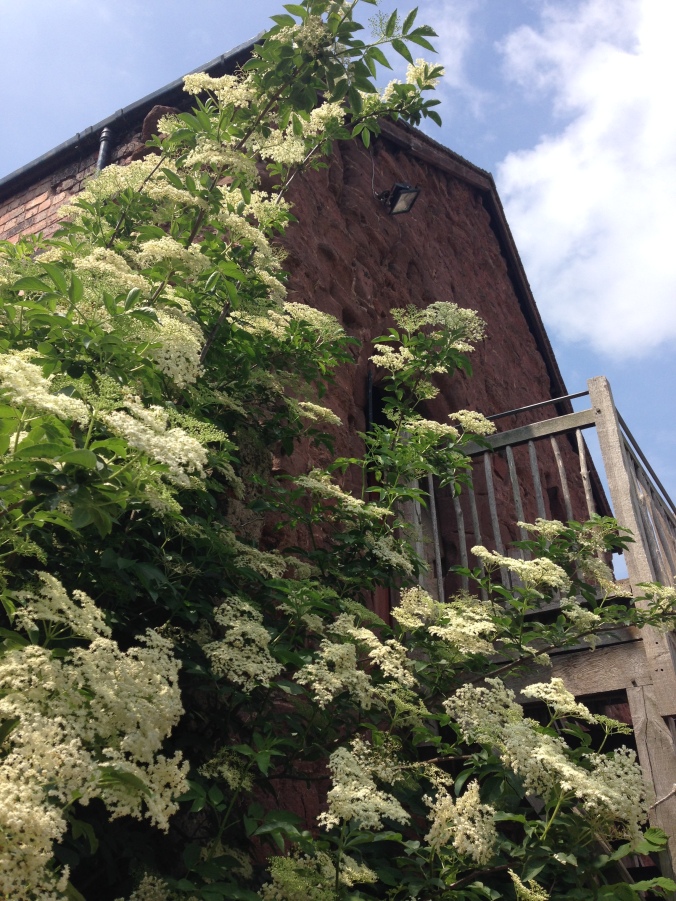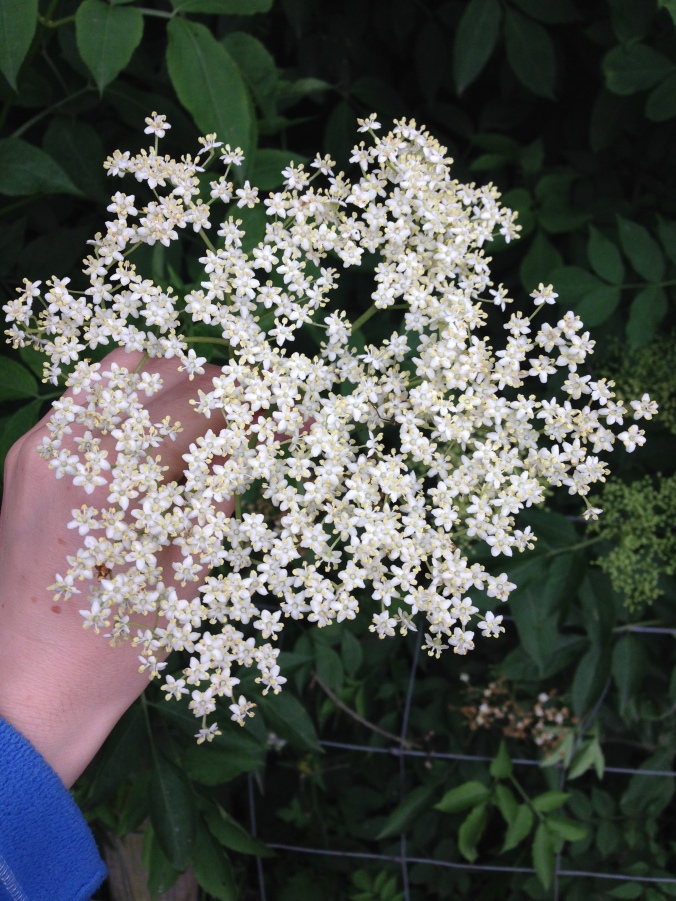Now firstly I have to say harvesting from the wild is a delicate balancing act which not everyone agrees with. The fact is that at the moment our wild and semi-wild places are under extreme pressure from fragmentation, pollution, overuse and outright destruction. There are less and less flowers, less and less berries, less and less insects, meaning that everything higher up in the food chain is suffering. This means that we can’t go out and indiscriminately take from the wild as our ancestors once did. Harvesting from the wild must be done carefully and thoughtfully, always taking little of a common species and never taking all of a rare one.
That being said I am a great believer that eating wild foods helps better connect us with nature. For several years as a child I lived in Germany where it was common place to collect mushrooms, wood, nuts or berries. Yes sometimes it causes issues if done badly but it also gives everyone a better understanding of the natural world, and a better appreciation of it. After all how can we expect our children to grow up caring for a nature that they have never touch, tasted or had the time to get to know. For myself I find the more I know about nature, the more interesting it becomes. And I’m sure I’m not the only one in this.

Elderflowers are my favourite things to collect from the wild. This is because in general they are very common, with elder bushes growing in almost every hedgerow, the flower heads are numerous, and the bushes are tall meaning I will only ever pick the lowest hanging flowers, leaving the higher ones for the bees. And then of course there’s the fact that elderflower smells and tastes like summer, a subtle but sweet flavour which goes well in drinks and desserts alike.

For those that aren’t familiar with the elder bush it is a woody shrub which can grow to the size of a small tree. It’s bark is light brown with the wood being soft and brittle. Much of the elder is poisonous and old folk tales tell of it being bad luck to use elder for a cradle or burn it in the house, probably because of the poisons causing illness to the occupants. Many people can become confused between the similar looking Umbelliferae family, which includes cow parsley, hemlock and hogweed. All of these however are flowers rather than scrubs or trees and the difference in size and the brown woody stem of the elder should make it easy to identify. If all else fails give the flowers a sniff and if they smell of elderflower you’re on the right track.

In order to make elderflower cordial, my favorite, all you need is 20 flower heads. These are the great white clusters of smaller flowers rather than individual flowers themselves. Twenty is a good easy number to find and will make around 2 liters of cordial. In all wild harvesting there are some basic rules to follow which will help you avoid damaging the natural environment;
- Make sure whatever you’re harvesting is abundant before you take your share. For example if you have one bush in the whole of your line of sight it’s probably best to leave it to do its thing to help the population to grow. No matter how abundant things are nationally local population levels needs to be maintained as well
- If it’s rare leave it there. Always make sure whatever you’re collecting isn’t nationally rare. For example you might find a field full of pignuts, but across the landscape these are fairly scarce so I wouldn’t recommend gathering any
- Never strip a bush. If you’re picking berries or flower heads always take only a small proportion of what is on the bush and then move on, making sure you aren’t damaging the plant by taking everything it has
- Only take the part of the plant you want to use. If you want its berries don’t uproot the whole thing, give it the chance to keep growing and to produce more flowers and berries into the future
- Be careful you don’t trample other important things underfoot. When you’re single-minded looking for one thing it can be easy to miss whatever else is growing around you, but be careful you aren’t stampeding precious wildflowers whilst wandering around looking for nuts or berries
- For your own health and safety avoid picking along roadsides or in urban areas. There’s the obvious issue of traffic but also they less obvious one of pollutants being deposited on the plants from fumes. Best places to pick are along public footpaths on canals, rivers or fields
- Watch out for wildlife. In the spring and summer in particular there may be nesting birds or other creatures in and around the areas you are picking. If you disturb an animal just back away and leave the area undisturbed
- Be respectful of the landowner. In Scotland and Wales the right to roam means techically you could go picking wherever, but it’s still polite to be mindful of the landuse. For example do not go harvesting in a nature reserve, as these areas are specifically managed to benefit wildlife and for people to enjoy the natural beauty of the plants and creatures within it. In cropfields as well keep to the edges and avoid tramping the farmer’s hard work
Now when it comes to picking elderflower heads there isn’t anything too complicated about it. Mostly the heads can easily be snapped off with your hand and placed in a bag ready to take home. Just remember to check the flowers are open and haven’t gone over. Closed flowers will be easy to spot, looking like round green balls. To check if they are too old give them a sniff and look for any browning on the petals. If they don’t smell of elderflower or are going brown leave them on the bush, you might want to revisit these in the late summer to collect elderberries, or indeed just leave them to nature.
With everything collected take the heads home and check them for insects before putting them in a bowl of cold water with lemon rind, sliced lemons and citric acid (you can pick this up from the pharmacy). Cover with a tea towel and leave overnight. In the morning you can strain the mixture through the tea towel and into a pan, adding the sugar. All you need to do now is heat the mixture till the sugar disappears. Now leave it to cool. Simple. Just sterilize some glass bottles in hot water and fill them with the mixture. It will keep for several months in the fridge, although I must admit mine usually vanishes in a few weeks. Use it as you would any cordial, mixing a small amount with water or adding it to other drinks like apple juice or sparkling water. This year I’m keen to do more than drink my elderflower, making some elderflower jelly and cakes as well. Another good storage method is to pour the mixture into old ice cream tubs and freeze it into a kind of sorbet, which can then be scooped out and added to drinks. But whatever you do with it one thing’s for sure, whilst searching the hedgerows for those special blooms you’ll see far more than if you’d grabbed a bottle at the supermarket. And at the end of the day you, and whoever has joined you, will hopefully know nature a little better.
Ingredients list
- 20 elderflower heads
- 2 lemons
- 50g citric acid
- 1.2 litres of water
- 1kg sugar


I’m breaking open our elderflower champagne tonight 🙂
LikeLike
Perfect for the summer 🙂 don’t forget to get the elderberrys when they come out in the winter.
LikeLike